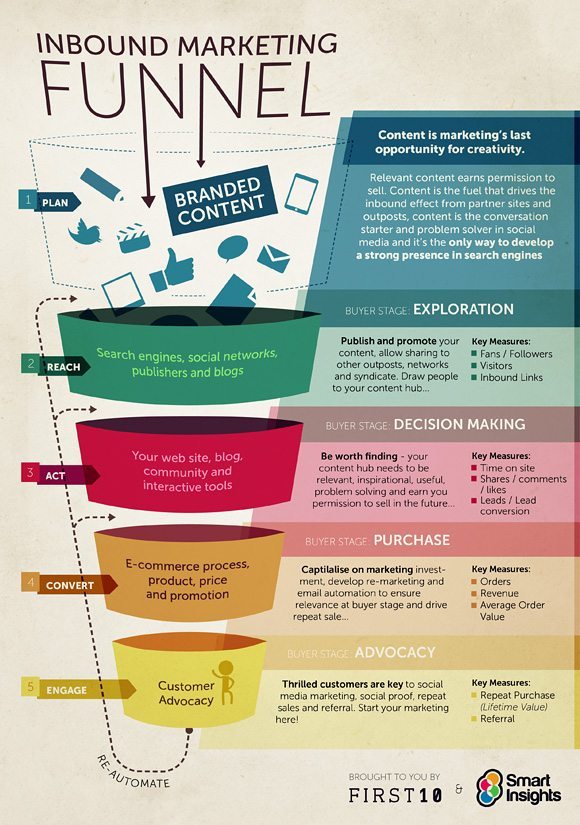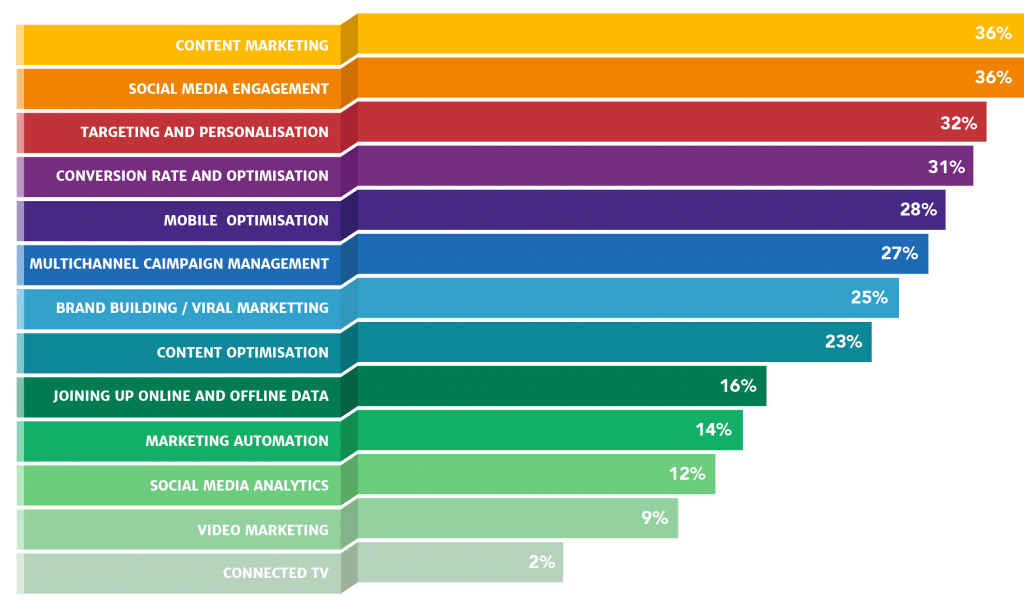A lot of businesses look at strategy and planning in an ad-hoc way. They make reactionary calls as they go when the latest businesses needs and new technologies surface.
Have you ever worked on a project and the scope of requirements are adjusted half way in? For example, someone decides that the business needs a new Smartphone app with geo location and dynamic content…. just because.
If you’ve shared this experience you’ll be aware how reactionary businesses can be, but there’s an opportunity for some long-term thinking. A plan.
The Digital Strategy
If you plan to be successful online, it’s vital that you focus on what you want to communicate, who you want to communicate to and how you’re going to communicate it.
The digital marketing strategy is the plan that ensures your digital marketing efforts are tailored to your target audience, in a way that maximises return on investment. It can take a lot of work and effort to put your plan in place. But like many things in life worth doing, they can be a battle.
“As you’ve probably discovered, great work makes us uncomfortable…” Seth Godin.
There are different approaches to engaging a digital strategy. I like to think of it as planning an assault on a digital battlefield. At the core, your strategy should include four steps:
- Research: survey your battlefield
- Goals: Set the Targets and Objectives
- Plan your assault: Tools & Tactics
- Review & Optimise
Within each of these stages, a number of techniques and digital channels can be used, from search marketing to web design & user experience to social marketing.
1. Research
You can never have too much research. Know your target audience inside-out, find out how, when, why and what they are looking for online. Try these:
- Surveys / Interviews
- Client Workshop
- Keyword research
- Competitor Analysis
Staying on the competition; Competitor Analysis often includes steps found in traditional marketing such as products, prices, etc. There are a couple of important factors to consider:
- User experience: Gauge the usability or customer service of your business and contrasted it with your competitors and potential substitutes. What are their websites like, how is the buying or engagement experience?
- Features/functionality analysis: An evaluation of the features and functionality provided by your business or service compare with the competition.
- Reach: how do your competitors rank in search results, for social media loyalty and engagement?
2. Goals: Set your Targets
Where are your marketing problems? Where are the opportunities and how can digital marketing help?
It’s difficult to measure your success if you haven’t set specific goals and targets. It’s not enough to simply “build website sales”. How much do you want to grow and over what time frame?
All goals should be realistic and achievable. Everything you do must be relevant to your customer behaviour. Decide what you want to achieve: Keep current customers? Get new customers, up your average purchase value, or increase leads?
KPI’s (Key Performance Indicators) will help to structure your goals and create measurable goals. For example:
- Increase click through rates.
- Increase conversion rates.
- Reduce bounce rate.
- Reduce cart abandonment.
3. Plan your assault: Tools & Tactics
At the planning stage you should be aware of:
- What you are doing well and where you can improve across digital channels.
- Your Target Audience
- Your Competition
If you know who your competitors are, you have some idea of how to differentiate yourself in your industry. But it’s your target customers that should be the strongest influence on your brand or business. Having a well developed brand is important because:
- Your business must engage your target audience to drive sales.
- Your target customers demographics and buying habits will determine who you are, and therefore what your brand is.
- Your brand affects how well you sell or talk to your target audiences.
Tools & Tactics
Based on our research and planning, which digital channels are best suited to engage our target audiences? We can break them down into 3 areas: Reach, Convert and Engage.
- Reach: These are typically off-site channels that build awareness and drive traffic on to your website or web properties: Search Optimisation, PPC, Affiliate Marketing and Social Media.
- Conversion: What takes place on your website or app. What features should your website have? What content will appeal to your target audiences? Key tasks include: website optimisation, good user experience, device friendly content, sale conversion, lead generation, testing.
- Engagement: Building customers and followers to drive repeat visits and sales. Key tasks: Content marketing e.g. Blog, promotional email marketing, customer support, social media engagement.
4. Review and Optimise
The final and essential piece of the Digital Strategy jigsaw is to monitor performance and KPI’s.
Google Analytics, Ranking reports, Sales and Conversion tracking. The following graphic uses data from a recent eConsultancy survey which asks what are the top digital channel priorities for companies in 2014.
“Digital thinking should be embedded in marketing strategies as a matter of course. Digital may not be relevant to every marketing effort, but organisations need to properly consider digital and change their culture and processes to become more digitally oriented.” from eConsultancy’s Modern Marketing Manifesto.
At Friday, as an agency we have to be commercially focussed and know where & why money is being made online. We have to understand how to measure and optimise key commercial metrics to be able to help solve marketing problems for our clients. If you need help planning or executing your digital marketing strategy, give us a shout, we can help.


